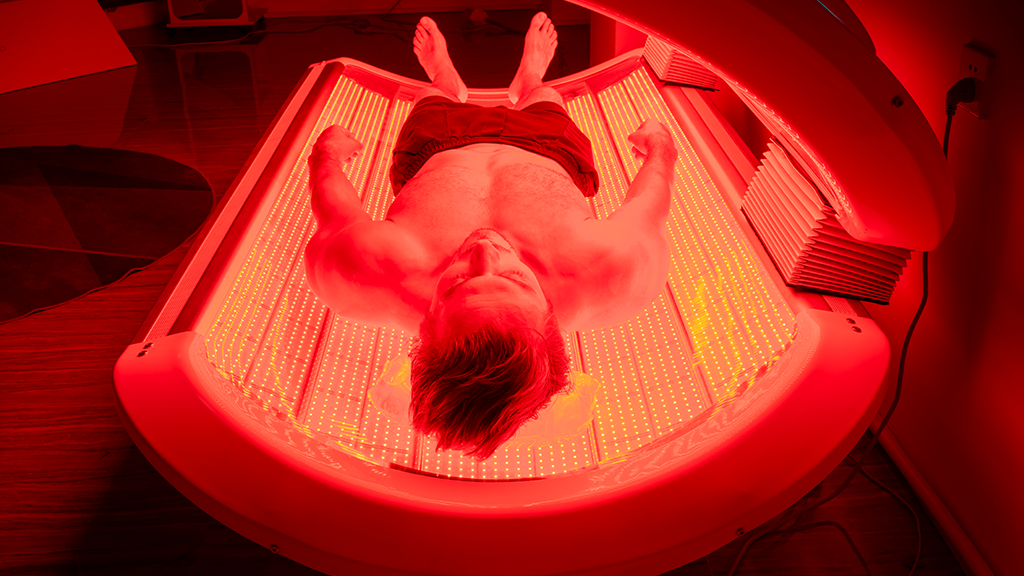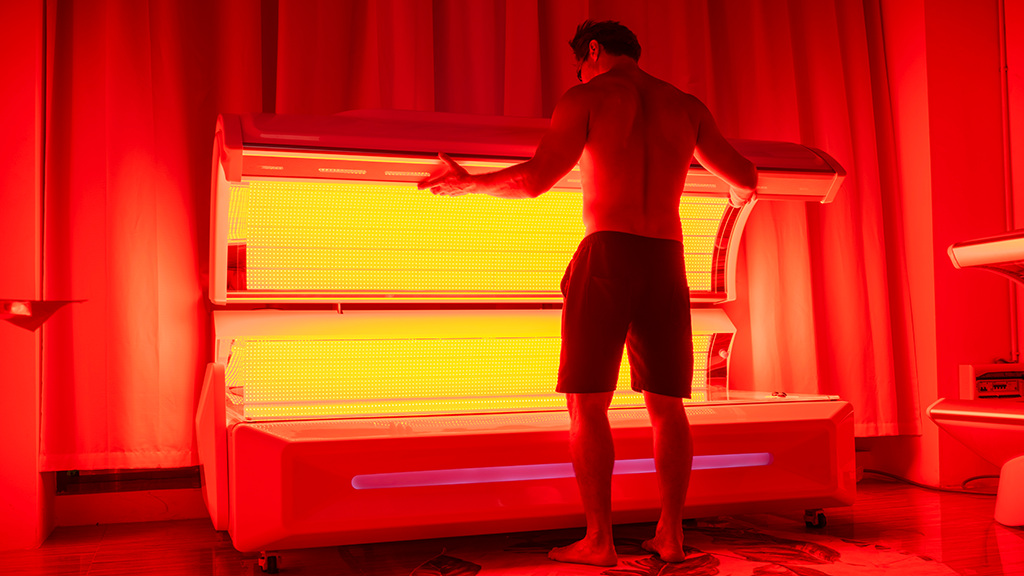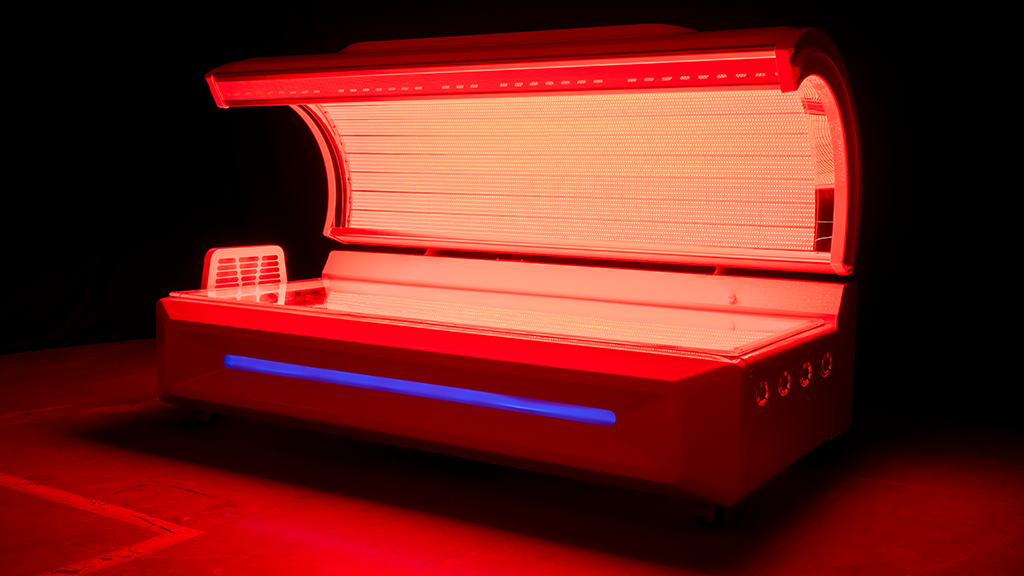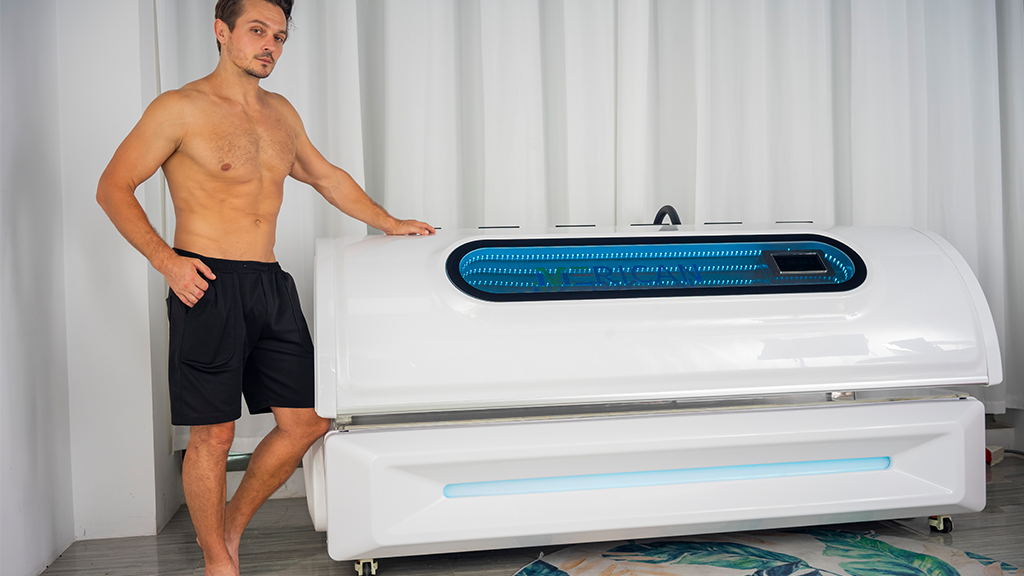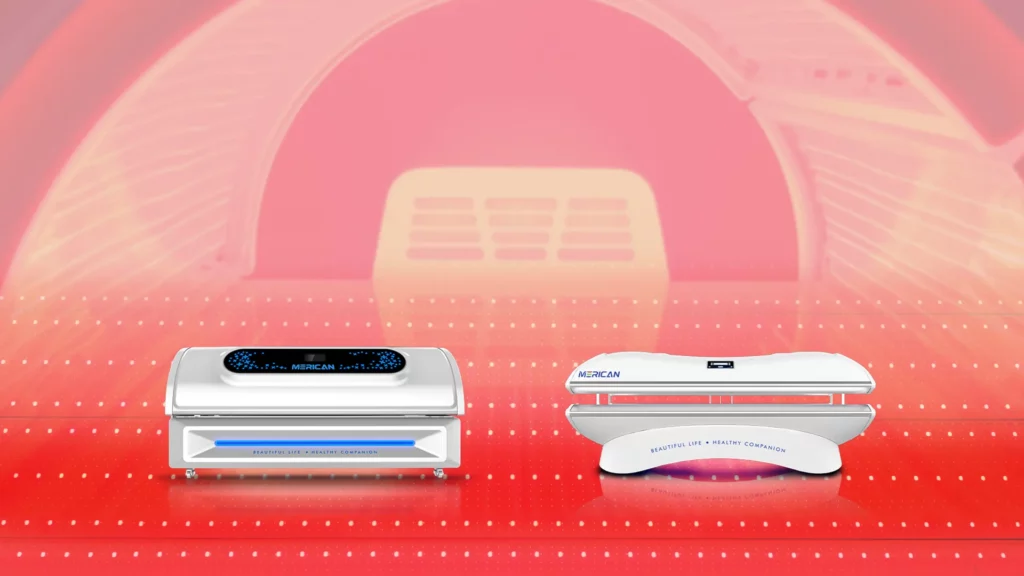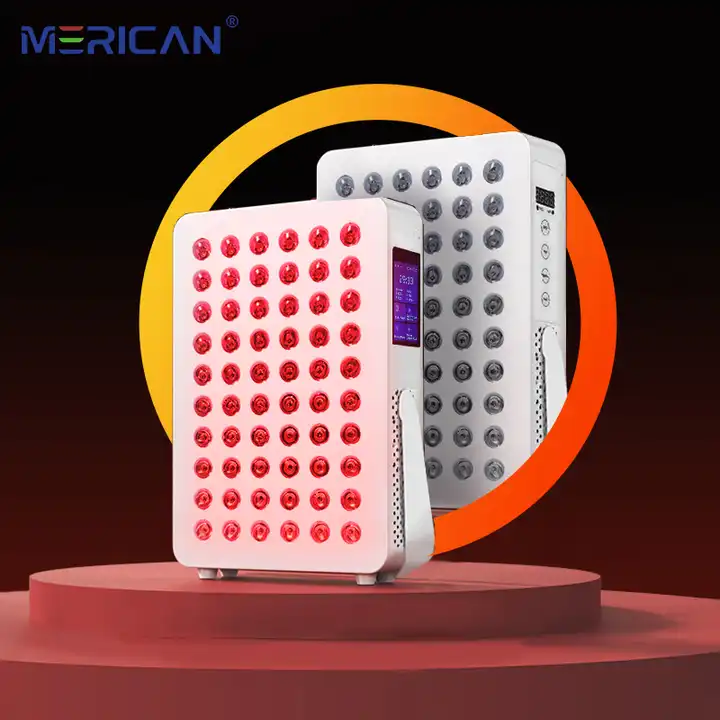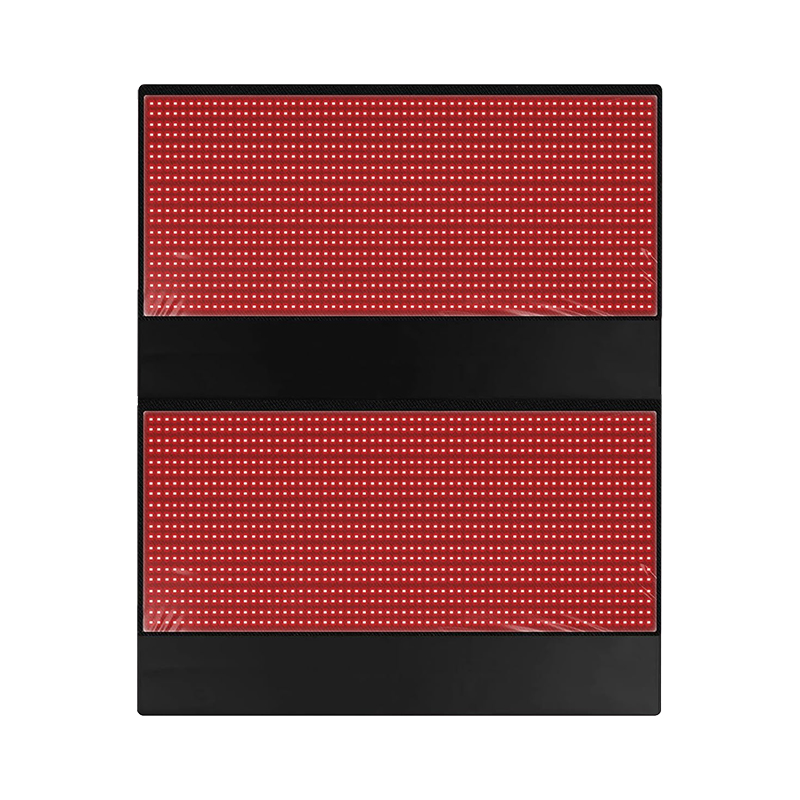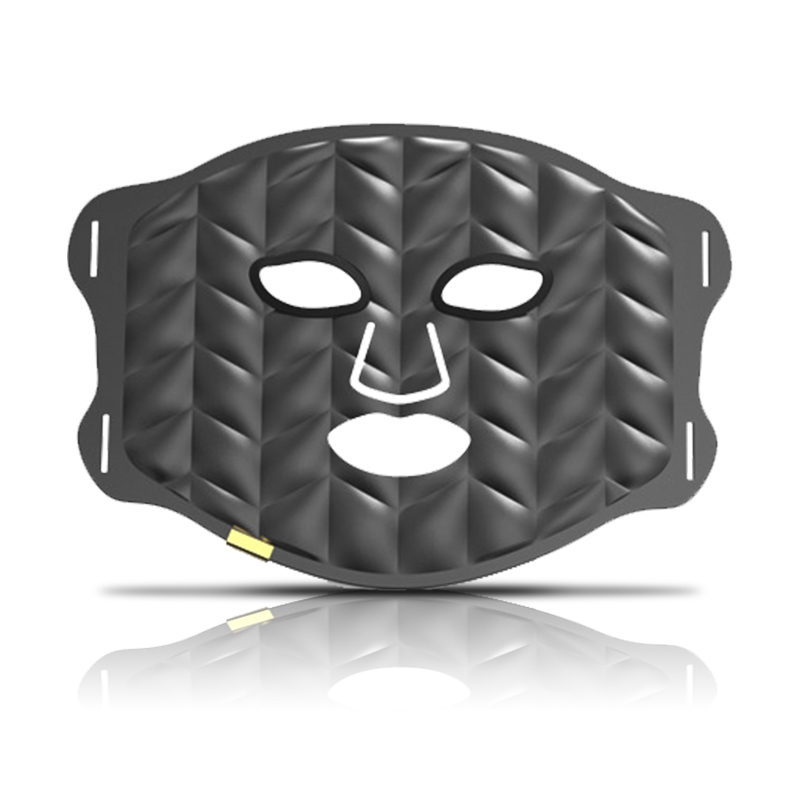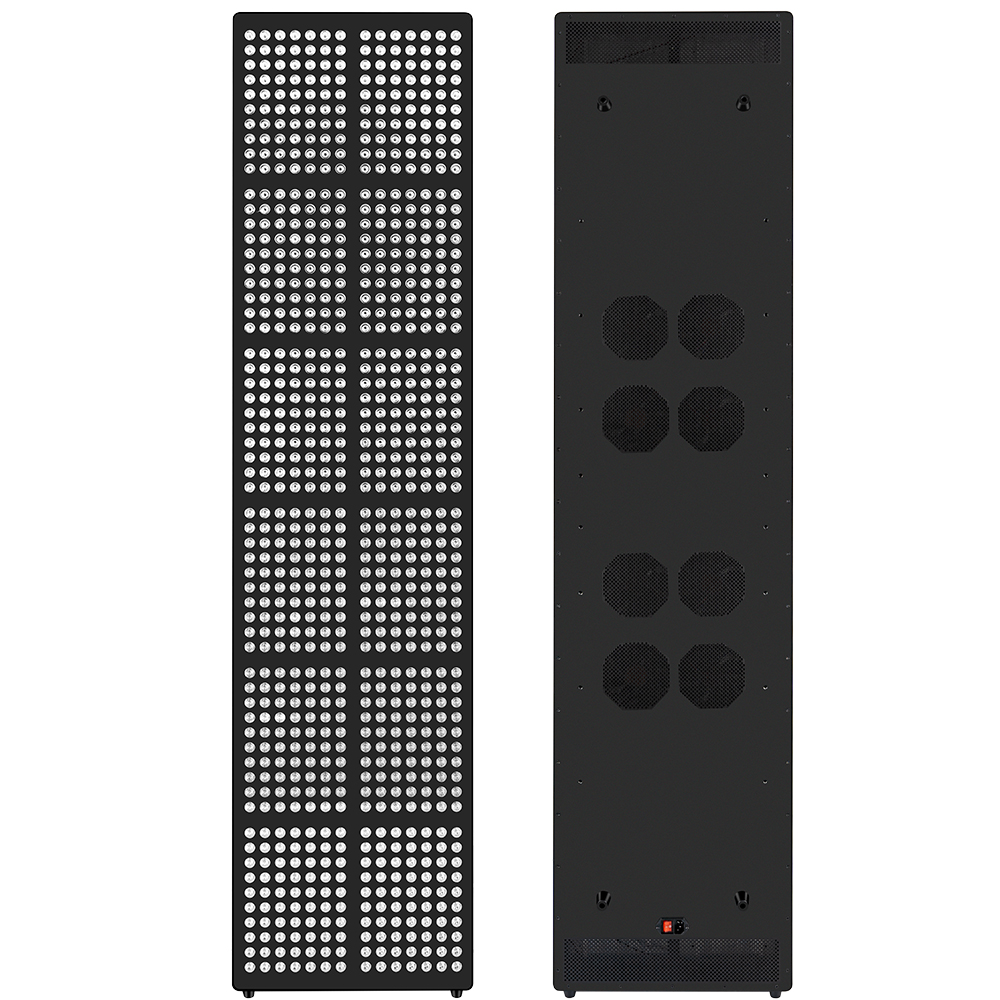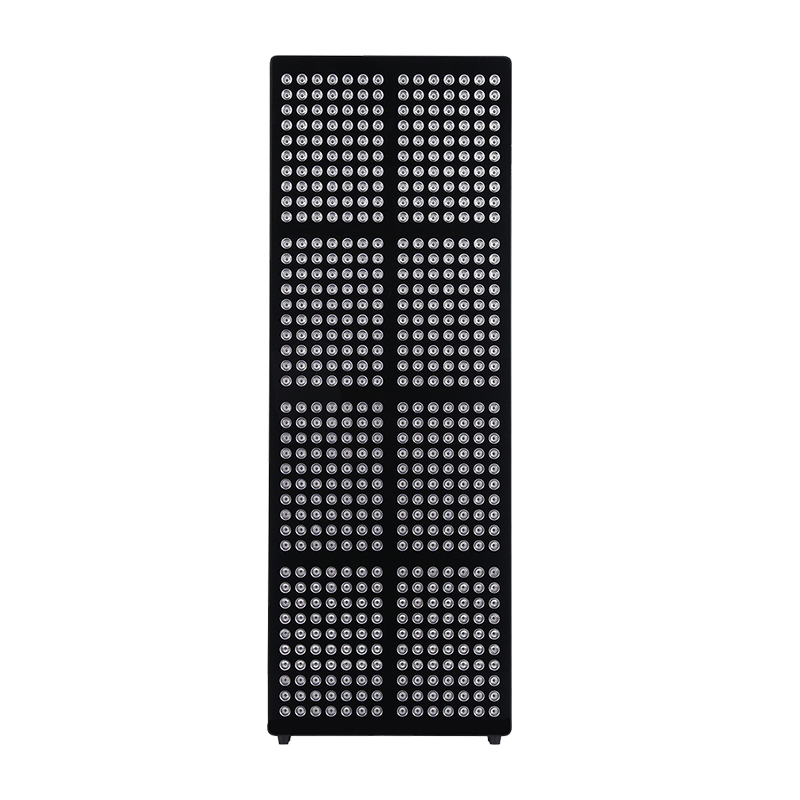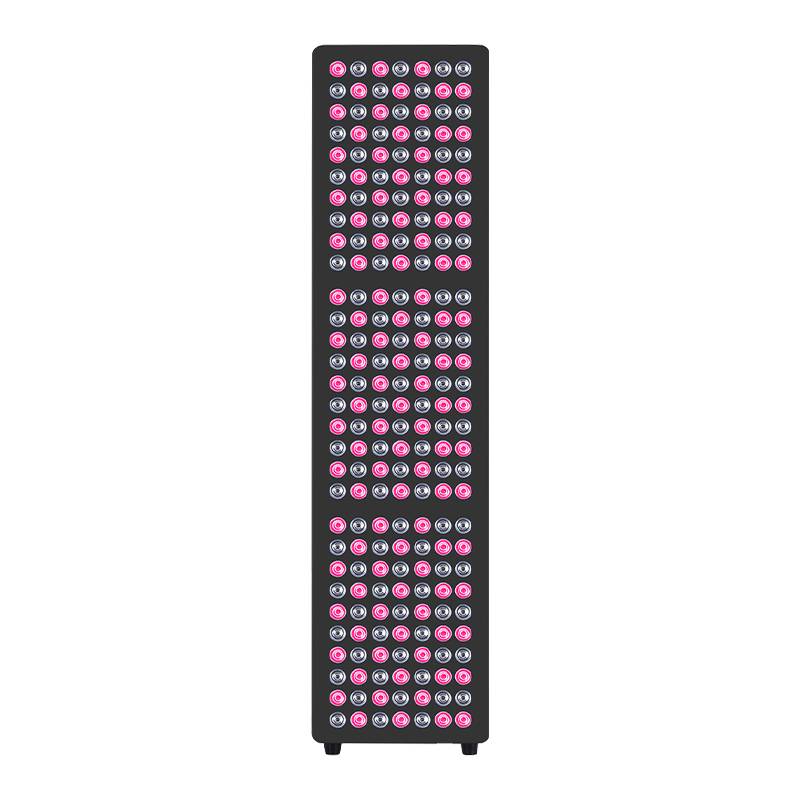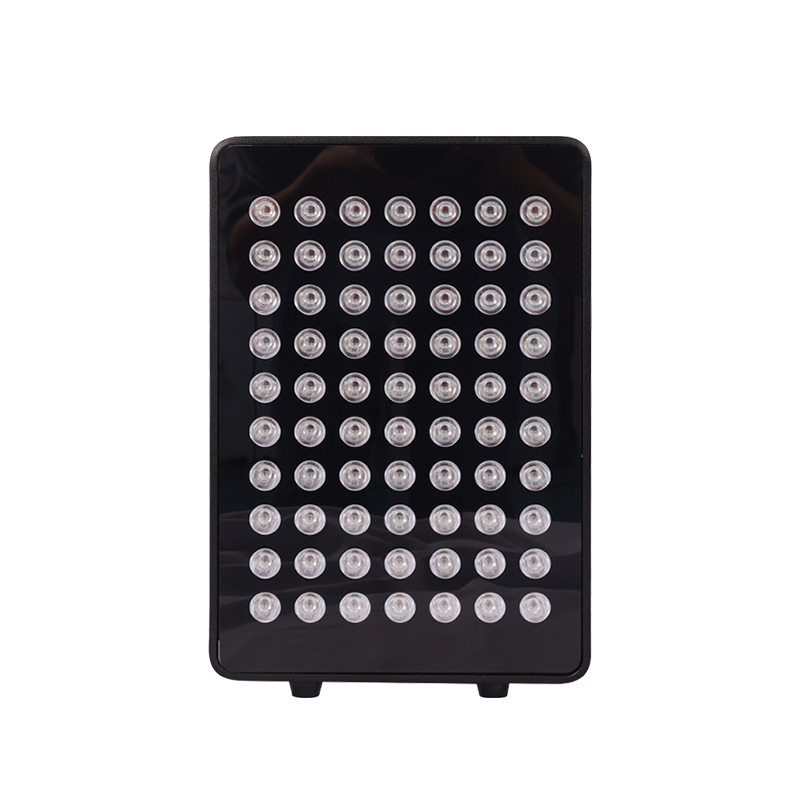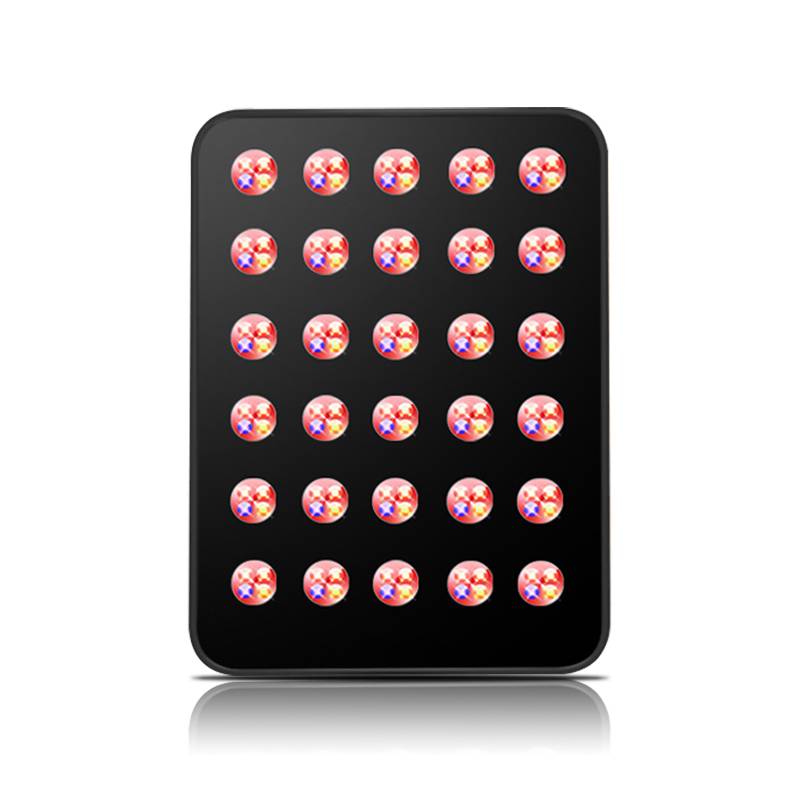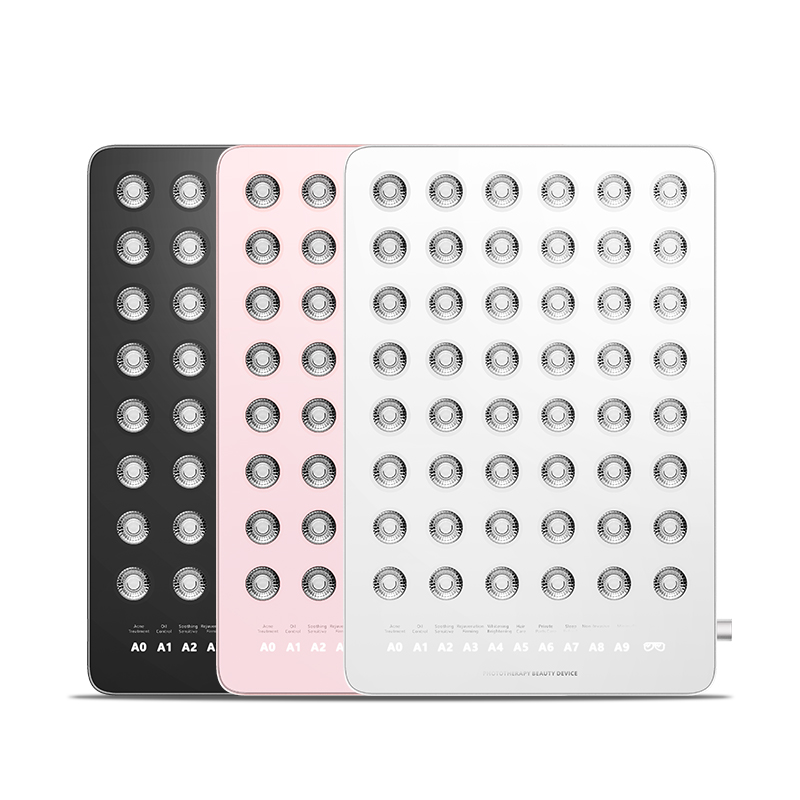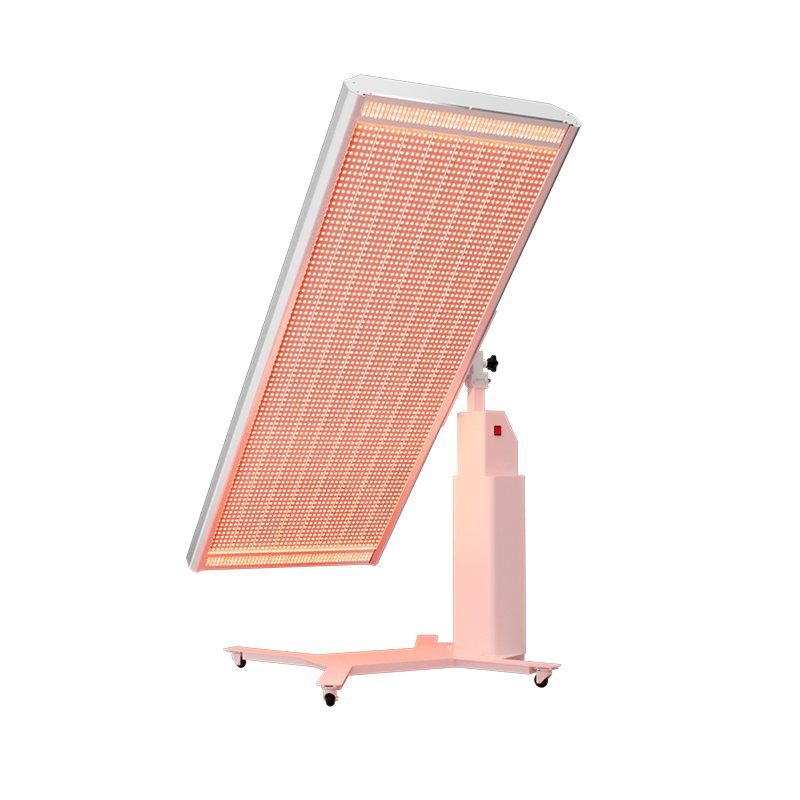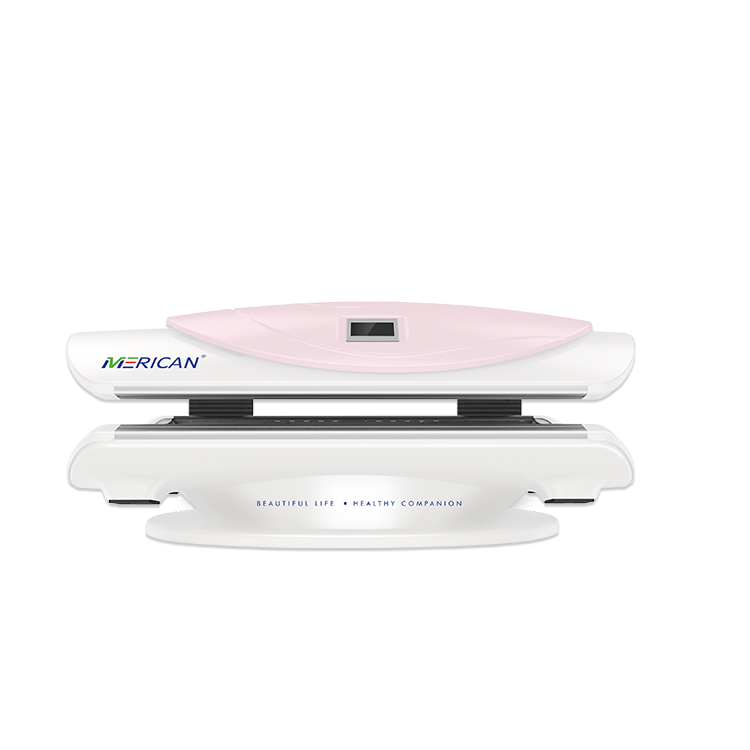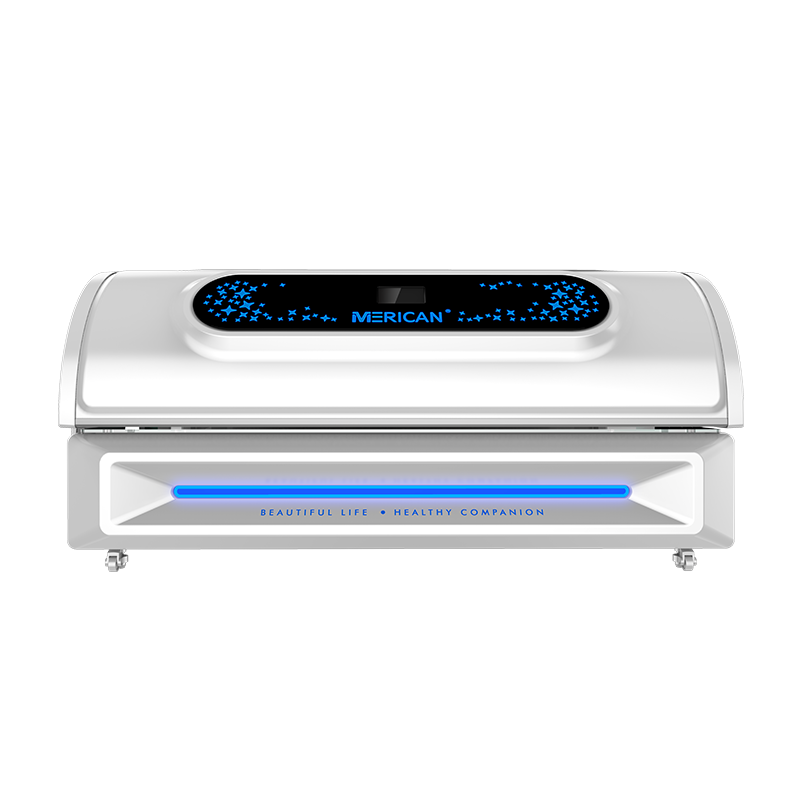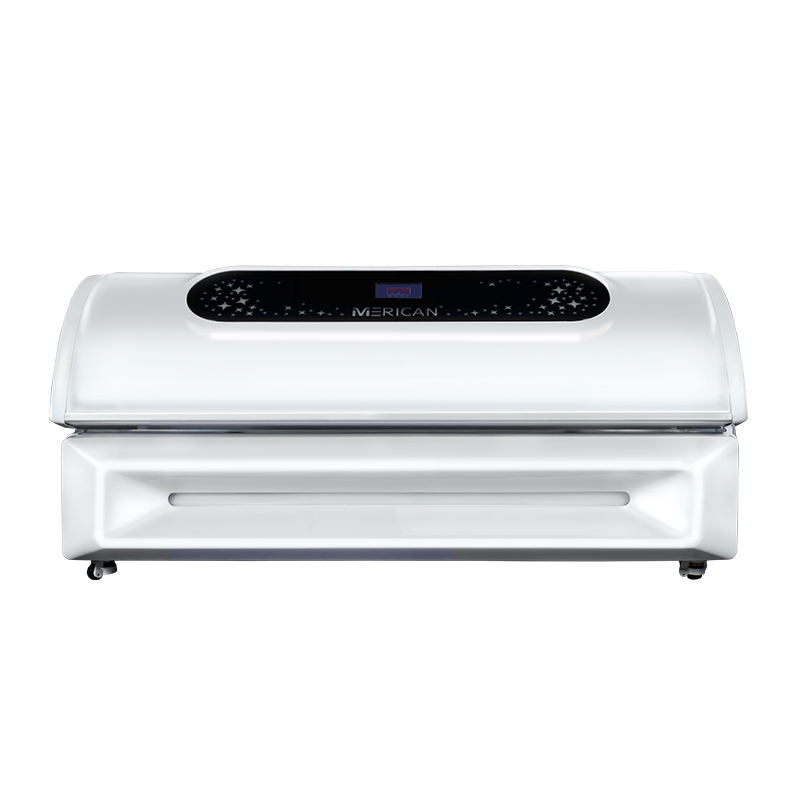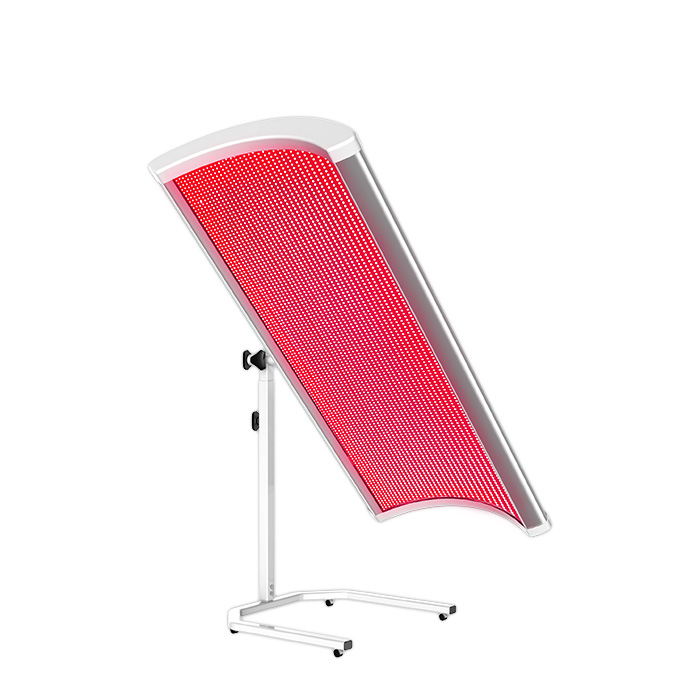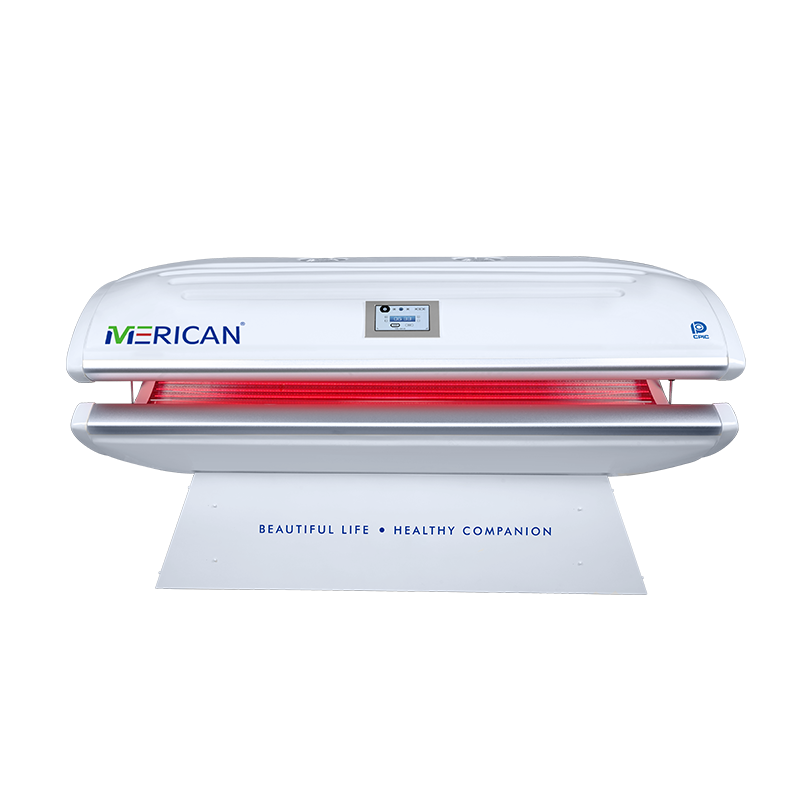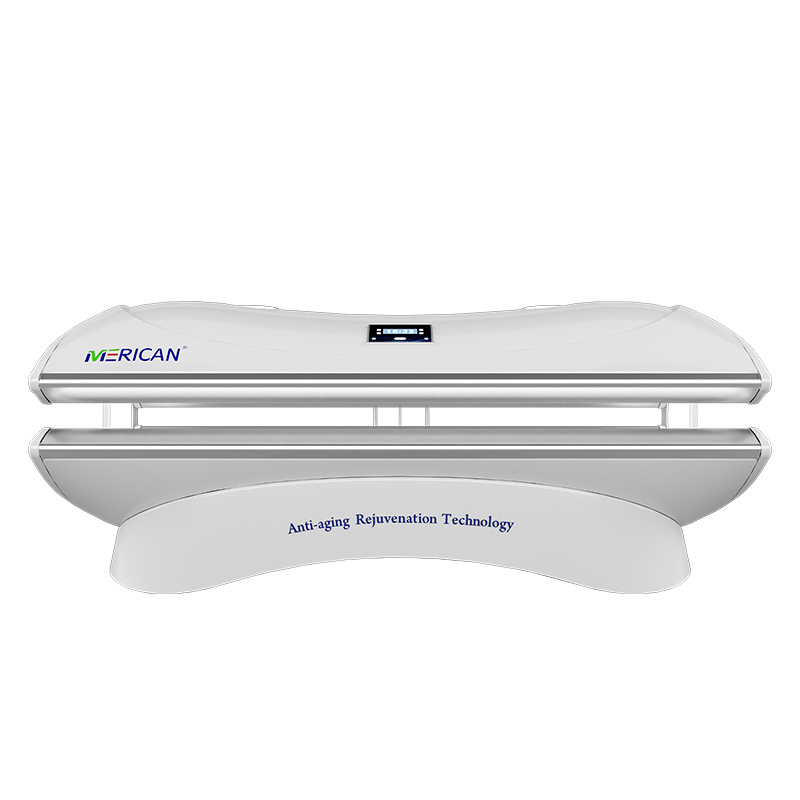Lascia che ci sia luce – per il tuo dolore, pelle, e lesioni, questo è. Le possibilità della luce rossa di trattare una varietà di problemi di salute ed estetici stanno appena emergendo grazie all’interesse dei ricercatori, università, e ospedali, così come i dispositivi domestici che lo rendono più accessibile.
Terapia con la luce rossa (RLT) è un tipo di fotomedicina, che è “l’uso della luce per curare la pelle e altre condizioni di salute,"Dice Jared Jagdeo, MD, il direttore fondatore del Center for Photomedicine presso la SUNY Downstate Health Sciences University di Brooklyn, New York.
Qui, conoscere la storia della terapia, come funziona, i suoi potenziali benefici, cosa aspettarsi dal trattamento, e altro.
Storia della terapia con luce rossa
C’è un altro termine per la terapia della luce, e questa è la fotobiomodulazione (o PBM in breve), dice Praveen Arany, Dottorato di ricerca, DDS, professore associato presso l'Università di Buffalo e direttore ad interim del Centro di eccellenza per la fotobiomodulazione presso la Shepherd University di Shepherdstown, Virginia Occidentale. Altri termini per la stessa cosa sono trattamento laser di basso livello (LLLT), fotostimolazione, e trattamento laser freddo, dice.
La terapia della luce esiste da più di 50 anni. Fu scoperto dal medico ungherese Endre Mester negli anni '60, quando esperimenti scientifici con laser rossi sui ratti portarono alla crescita dei peli e alla guarigione delle ferite., secondo un articolo di ricerca pubblicato a dicembre 2017 nel Giornale di Biofotonica. Nel corso degli anni, la terapia della luce era in gran parte considerata falsa. Ma con nuove ricerche (alcuni contrastanti), la comunità scientifica ha iniziato a prenderne atto.
“In questo momento negli Stati Uniti, la terapia con la luce rossa è ancora considerata una scienza non convenzionale. Ma sono sempre più numerosi i centri accademici e clinici che adottano la tecnologia e la rendono disponibile ai pazienti," Dott. Oro dice.
Adesso ci sono i centri, come quello della Shepherd University, dedicato alla formazione degli operatori sanitari e degli scienziati sulla legittimità della PBM come trattamento clinico, così come le organizzazioni professionali, come l'Associazione nordamericana per la terapia di fotobiomodulazione(CHIODO) e la Fondazione PBM. Uno degli usi più popolari della terapia con luce rossa è nella cura della pelle, e la disponibilità di dispositivi domestici a prezzi accessibili ne ha aumentato la popolarità.
Come funziona la terapia con luce rossa
La fotobiomodulazione utilizza la luce entro lunghezze d'onda specifiche. Questo è tra 400 nanometri (nm) (blu) fino a 1,200 nm (vicino infrarosso), dice Oro. La luce rossa ha lunghezze d'onda intermedie 620 A 750 nm, secondo il Centro nazionale per la ricerca atmosferica. Questa è la luce visibile.
Blu, verde, e la luce rossa sono state tutte utilizzate efficacemente per il trattamento PBM, dice. Luce a infrarossi vicino, che è una luce a lunghezza d'onda maggiore (fino a 1,200 nm), viene utilizzato anche nel PBM ed è disponibile nelle saune a infrarossi. Mentre questa luce può apparire rossa, in realtà, la luce infrarossa non è visibile e riscalda invece il corpo dall'interno per guidare i cambiamenti fisiologici.
Terapia con la luce rossa, in particolare, è cresciuto in popolarità negli ultimi anni ed è forse il più conosciuto e di più facile accesso. “I dispositivi a luce rossa sono più facili da produrre e sono ampiamente disponibili,Oro dice.
Allora come funziona?? Quando i fotoni (particelle di luce) sono posti vicino alla pelle, entrano nei tessuti e attivano i cromofori (una parte di una molecola che le conferisce il colore), che innesca cambiamenti nelle cellule, secondo l'American Society for Laser Medicine & Chirurgia. Inoltre, la terapia con luce rossa colpisce anche i mitocondri (la centrale elettrica delle cellule), generare ATP (energia) per favorire la guarigione, osserva la Fondazione PBM.
Perché la terapia con la luce rossa funzioni, devono essere utilizzati protocolli e dosaggi specifici, a seconda del tuo problema di salute, ecco perché un professionista esperto è così importante, dice Oro. Se possibile, cercare questo trattamento da un ospedale, università, o contesto clinico. Si sconsiglia la terapia con la luce rossa da saloni o spa.
I dispositivi a luce rossa possono essere acquistati e utilizzati a casa per la cura della pelle, e questi sono generalmente sicuri da usare come indicato, dice il Dott. Jagdeo.
I dispositivi per la terapia con luce rossa sono dotati di luci rosse a LED utilizzate come dispositivi portatili, Pannelli a LED, o letti per tutto il corpo, a seconda del motivo del trattamento. Alcuni dispositivi utilizzano luci rosse e del vicino infrarosso, ma in generale, non esistono diversi tipi di terapia con luce rossa.
Tipi di terapia con luce rossa
I dispositivi per la terapia con luce rossa sono dotati di luci rosse a LED utilizzate come dispositivi portatili, Pannelli a LED, o letti per tutto il corpo, a seconda del motivo del trattamento. Alcuni dispositivi utilizzano luci rosse e del vicino infrarosso, ma in generale, non esistono diversi tipi di terapia con luce rossa.
Possibili benefici della terapia con luce rossa
Mentre la ricerca è promettente sulla terapia con luce rossa, ci sono ancora studi contrastanti e alcuni non mostrano alcun beneficio per determinate condizioni di salute. Generalmente, gli studi necessitano di una maggiore standardizzazione a tutti i livelli (nel dosaggio e nei tempi) a seconda delle condizioni affinché scienziati e professionisti comprendano appieno la gamma di benefici della terapia con luce rossa. Di seguito sono riportati i potenziali usi promettenti per la terapia con luce rossa, secondo gli esperti.
Migliora un aspetto giovanile della pelle
Uno dei benefici più comunemente citati della terapia con luce rossa sono i suoi effetti sulla pelle. Può essere usato per indirizzare:
Acne
Linee sottili e rughe
Crescita dei capelli
Arrossamento
La terapia con luce rossa riduce l'infiammazione per affrontare il rossore, acne, e la crescita dei capelli, consentendo inoltre ai trattamenti topici o orali di far funzionare ancora meglio queste condizioni, dice Jagdeo. Inoltre, quando si tratta di eliminare gli sfoghi, “La terapia con la luce rossa aumenta le nostre difese immunitarie contro i batteri associati alla formazione dell'acne,” aggiunge. Per linee e rughe, questi trattamenti prendono di mira gli enzimi associati alla degradazione del collagene e stimolano la produzione di collagene, secondo la Cleveland Clinic
Coadiuva la riabilitazione da infortuni sportivi
Essere messo da parte a causa di un infortunio è estremamente difficile mentalmente e fisicamente, ma la terapia con la luce rossa può aiutarti a rimetterti in piedi. “La luce rossa può essere utilizzata per migliorare le prestazioni dei muscoli scheletrici, ridurre il dolore, e migliorare il recupero dagli infortuni,dice Oro. Gli autori di una recensione pubblicata a dicembre 2021 sulla rivista Life ha osservato che il PBM potrebbe essere utilizzato sia nella riabilitazione degli infortuni sportivi, e per migliorare le prestazioni sportive, anche se sono necessarie ulteriori ricerche.
Aiuta a guarire le ferite
Che tu abbia un'ulcera in bocca o una ferita aperta sul piede, è stato dimostrato che le proprietà antinfiammatorie della luce rossa migliorano la capacità del corpo di guarire, dice Oro, che ha pubblicato una recensione in aprile 2019 in Progressi nella cura della pelle e delle ferite sull'argomento. “La ricerca nel mio laboratorio mostra che il PBM può attivare un potente fattore di crescita che promuove la guarigione e la rigenerazione dei tessuti,” spiega, qualcosa che potrebbe essere particolarmente importante per le ferite orali, la ricerca ha dimostrato.
Riduce il dolore
Il dolore è notoriamente difficile da trattare, ma la terapia della luce può essere uno strumento valido per aiutare. “La luce rossa agisce sui neuroni che trasmettono il dolore,dice Oro.
La luce rossa può essere migliore per alcuni tipi di dolore rispetto ad altri, secondo una recente recensione pubblicata a luglio 2022 nel diario del dolore. Gli autori hanno notato che ci sono alcune prove dell’efficacia della luce rossa per condizioni di dolore come la fibromialgia, ipotensione cronica, osteoartrite, e neuropatia.
Diminuisce gli effetti collaterali del trattamento del cancro
Se usato preventivamente prima di un trattamento chemioterapico o radioterapico, la terapia con la luce rossa può aiutare a ridurre gli effetti collaterali, come il dolore, e la loro gravità, dice Oro, sebbene siano necessari ulteriori studi sull’uomo per comprendere appieno questo beneficio.
Per esempio, uno studio sui topi, pubblicato a dicembre 2021 nella rivista Fotonica, ha scoperto che la terapia con luce rossa e vicino infrarosso riduceva la gravità del danno cutaneo causato dalle radiazioni e migliorava la capacità della pelle di guarire. Questo è uno studio sugli animali, anche se pone le basi per svolgere ulteriori ricerche necessarie.
Altre ricerche precedenti hanno anche dimostrato che la PBM riduce il gonfiore e l’infiammazione dei tessuti orali nelle persone che hanno tumori della testa e del collo, anche se sono necessari ulteriori studi.
Rischi della terapia con luce rossa
La terapia con la luce rossa viene autorizzata dagli Stati Uniti. Amministrazione degli alimenti e dei farmaci (FDA), secondo la Fondazione PBM. È considerato molto sicuro, dice Jagdeo, anche se c'è sicuramente la possibilità di errore da parte dell'utente se utilizzi un dispositivo domestico. Per esempio, è possibile abusare del dispositivo o utilizzarlo più frequentemente di quanto raccomandato dal produttore. La buona notizia è che molti dispositivi domestici sono dotati di timer e spegnimento automatici, dice Jagdeo, il che rende più facile non esagerare. Seguire sempre le istruzioni, e tieni presente che la revisione del Journal of Pain ha rilevato il rischio di peggioramento dei sintomi dell'emicrania per alcuni utenti. È anche importante consultare il medico appropriato (ad esempio il tuo dermatologo o PCP) per renderli consapevoli che la terapia con luce rossa è nel tuo piano di trattamento. Finalmente, cercare un trattamento da un professionista rispettabile. “La luce può causare danni, ma se viene utilizzato il protocollo giusto, non vedi alcun effetto collaterale," dice Jagdeo.
Chi potrebbe voler provare (ed Evitare) Terapia della luce rossa
La terapia con luce rossa è concepita come trattamento di supporto. Senso: È improbabile che la terapia con luce rossa sia l’unico trattamento che utilizzi per affrontare un problema di salute o di cura della pelle. Ad esempio, insieme alla luce rossa, puoi anche usare un prodotto topico (come un retinoide) per acne o linee sottili, osserva Jagdeo.Se sei incinta, dovresti evitare la terapia con la luce rossa, dice Oro. E se stai trattando una condizione medica specifica, chiedi prima l'ok al tuo medico.
Iniziare con la terapia della luce rossa
Ecco cosa potresti voler sapere prima di provare la terapia con la luce rossa sotto la guida del tuo medico professionista. Generalmente, la terapia con la luce rossa verrà eseguita in una serie di sessioni in un certo arco di tempo. Ad esempio, dice Jagdeo, quando si tratta di problemi della pelle, consiglia di provare la terapia con la luce rossa tre volte a settimana 10 minuti ogni volta per un minimo di un mese. “Alcuni pazienti vedranno i risultati in appena un mese, ma spesso questi risultati continuano a migliorare nel tempo," dice. Mentre molti dispositivi per la terapia con luce rossa a domicilio sono disponibili per l'acquisto, è sempre meglio parlare con un dermatologo o uno specialista del dolore prima di provare la terapia con la luce rossa da solo. Una conversazione con un operatore sanitario qualificato ti aiuterà non solo a stabilire i tuoi obiettivi di benessere e a determinare se la terapia con la luce rossa è adatta a te, ma anche a trovare il dispositivo domestico specifico che valga il costo.
Cosa aspettarsi prima, Durante, e dopo la terapia con luce rossa
Probabilmente non farà male. La terapia con luce rossa non è invasiva ed è indolore per la maggior parte delle persone. Un dispositivo portatile può essere premuto contro la pelle nel punto della lesione o del dolore. Se sei sdraiato su un letto o una capsula per tutto il corpo che utilizza sia la luce rossa che quella del vicino infrarosso, potresti sentire il calore delle lampadine nel vicino infrarosso. Non dovresti aspettarti di sperimentare effetti collaterali dal trattamento, dice Oro. Guarda i tuoi occhi. Chiedere al professionista se è necessario indossare una protezione per gli occhi durante il trattamento. Potresti sentirti a tuo agio. Uno dei grandi vantaggi della terapia con la luce rossa è il modo in cui le persone dicono di sentirsi rilassate dopo il trattamento, dice Jagdeo. Considera questa volta il tuo tempo e appoggiati agli effetti calmanti. Potrebbe essere necessario più di un trattamento. Parla in anticipo con il tuo professionista per capire di quante sessioni avrai bisogno (e quanto spesso), in modo da poter comprendere appieno l'ambito del trattamento. Ciò varierà ampiamente a seconda del problema di salute che stai affrontando. “In certi scenari, anche un singolo trattamento ha dimostrato di essere efficace, mentre il trattamento PBM più intenso è tre volte a settimana per quattro settimane, minimo, per vedere un effetto evidente,dice Oro. Detto questo, tieni presente che il mondo della fototerapia è in evoluzione, e sono necessarie ulteriori ricerche per determinare gli usi migliori per le varie lunghezze d'onda, dosi, e dispositivi per condizioni di salute specifiche. È meglio consultare un dermatologo, specialista del dolore, o il tuo medico se hai domande o prima di impegnarti in qualsiasi trattamento ad alto costo. La guida medica ti aiuterà a valutare i benefici e i rischi della terapia con la luce rossa per i tuoi specifici obiettivi di salute.
Risorse per la terapia con luce rossa che amiamo
Le migliori organizzazioni
Fondazione PBMPer informazioni su cos'è PBM, come funziona, e quali condizioni di salute può essere utilizzato per affrontare, questa fondazione è un'ottima risorsa. Potrai anche guardare video con testimonianze di pazienti che parlano di come la terapia con luce rossa li ha aiutati. American Academy of DermatologyLa principale associazione dermatologica istruisce su una vasta gamma di argomenti per la cura della pelle, compreso l'uso della terapia della luce per varie condizioni, come la rosacea, acne, e psoriasi, offrendo un imparziale, punto di vista scientifico sullo stato della ricerca.
Miglior centro accademico
Shepherd UniversityLa Shepherd University ha recentemente aperto un nuovo Centro di eccellenza nella fotobiomodulazione per contribuire a far progredire la comprensione scientifica e i progressi sulla fotobiomodulazione (che include terapie a luce rossa).
Le migliori risorse scientifiche
Fotobiomodulazione, Fotomedicina, e Laser ChirurgiaVuoi rimanere aggiornato sulla letteratura scientifica sulla fototerapia? Dai un'occhiata alla rivista peer-reviewed Photobiomodulation, Fotomedicina, e Chirurgia Laser per questioni attuali e passate sulla fototerapia, terapia laser a basso livello, fotobiomodulazione, e chirurgia laser. Il Centro nazionale per la salute complementare e integrativa NCCIH è un'eccellente risorsa per ottenere uno sguardo di alto livello su dove si trova il consenso scientifico dietro le terapie complementari. Puoi cercare per argomento o problema di salute nel loro database e leggere le terapie supportate (o non supportato) dalla ricerca.

